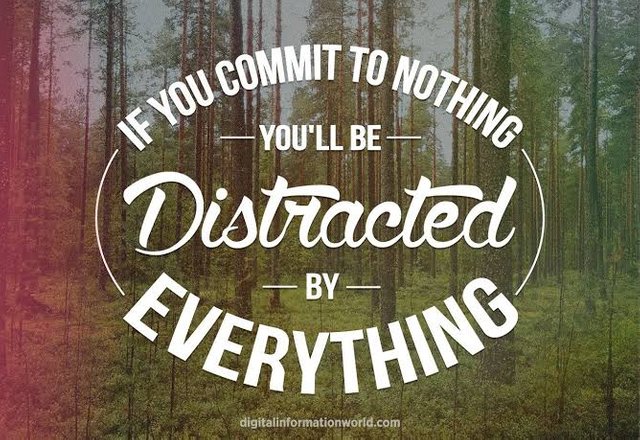If You Commit to Nothing, You’ll Be Distracted By Everything
In the northeastern hills outside Kyoto, Japan there is a mountain known as Mount Hiei. That mountain is littered with unmarked graves.
Those graves mark the final resting place of the Tendai Buddhist monks who have failed to complete a quest known as the Kaihogyo.
What is this quest that kills so many of the monks? And what can you and I learn from it?
Keep reading and I’ll tell you.
The Marathon Monks
The Tendai monks believe that enlightenment can be achieved during your current life, but only through extreme self–denial.
For the Tendai, the ultimate act of self–denial — and the route to enlightenment — is a physical challenge known as the Kaihogyo. Because of this challenge, the Tendai are often called the “Marathon Monks.”
But the Kaihogyo is much more than a marathon.
The Kaihogyo
The Kaihogyo is a 1,000 day challenge that takes place over seven years.
If a monk chooses to undertake this challenge, this is what awaits him…
During Year 1, the monk must run 30 km per day (about 18 miles) for 100 straight days.
During Year 2, the monk must again run 30 km per day for 100 straight days.
During Year 3, the monk must once more run 30 km per day for 100 straight days.
During Year 4, the monk must run 30 km per day. This time for 200 straight days.
During Year 5, the monk must again run 30 km per day for 200 straight days. After completing the fifth year of running, the monk must go 9 consecutive days without food, water, or rest. Two monks stand beside him at all times to ensure that he does not fall asleep.
During Year 6, the monk must run 60 km (about 37 miles) per day for 100 straight days.
During Year 7, the monk must run 84 km (about 52 miles) per day for 100 straight days. (52 miles per day!) And then, he must run 30 km per day for the final 100 days.
The sheer volume of running is incredible, of course, but there is one final challenge that makes The Kaihogyo unlike any other feat…
Day 101
During the first 100 days of running, the monk is allowed to withdraw from the Kaihogyo.
However, from Day 101 onwards, there is no withdrawal. The monk must either complete the Kaihogyo … or take his own life.
Because of this, the monks carry a length of rope and a short sword at all times on their journey.
In the last 400+ years, only 46 men have completed the challenge. Many others can be found by their unmarked graves on the hills of Mount Hiei.
3 Lessons on Mental Toughness and Commitment
The mental toughness of the Marathon Monks is incredible and their feats are unlike most challenges that you and I will face. But, there are still many lessons we can learn from them.
1. “Complete or Kill.”
The Marathon Monks are an extreme version of the “complete or kill” mentality. But you can take the same approach to your goals, projects, and work.
If something is important to you, complete it. If not, kill it.
If you’re anything like me, then you probably have a bunch of half–finished, half–completed projects and ideas. You don’t need all of those loose ends.
Either something is important enough to you to complete, or it’s time to kill it. Fill your life with goals that are worth finishing and eliminate the rest.
2. If you commit to nothing, you’re distracted by everything.
Most of us never face a challenge with the true possibility of death, but we can learn a lot from the monk’s sense of commitment and conviction. They have clarified exactly what they are working toward and for seven years they organize their life around the goal of completing the Kaihogyo. Every possible distraction is rendered unimportant.
Do you think the monks get distracted by TV, movies, the internet, celebrity gossip, or any of the other things that we so often waste time on? Of course not.
If you choose, you can make a similar decision in your life. Sure, your daily goals may not carry the same sense of urgency as the Kaihogyo, but that doesn’t mean you can’t approach them with the same sense of conviction.
We all have things that we say are important to us. You might say that you want to lose weight or be a better parent or create work that matters or build a successful business or write a book — but do you make time for these goals above all else? Do your organize your day around accomplishing them?
If you commit to nothing, then you’ll find that it’s easy to be distracted by everything.
3. It doesn’t matter how long your goal will take, just get started.
On Day 101, the Tendai monks are thousands of miles and 900 days from their goal. They are setting out on a journey that is so long and so arduous that it’s almost impossible for you and I to imagine. And yet, they still accept the full challenge. Day after day, year after year, they work.
And seven years later, they finish.
Don’t let the length of your goals prevent you from starting on them.
Never give up on a dream just because of the length of time it will take to accomplish it. The time will pass anyway.
—H. Jackson Brown
